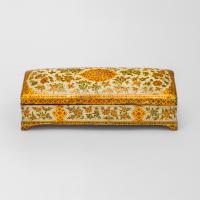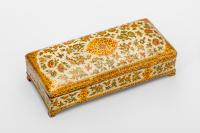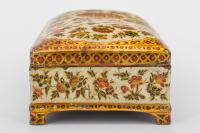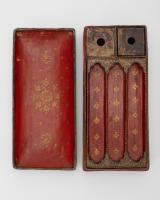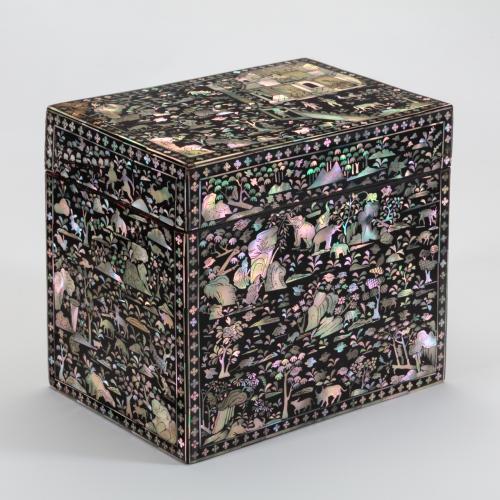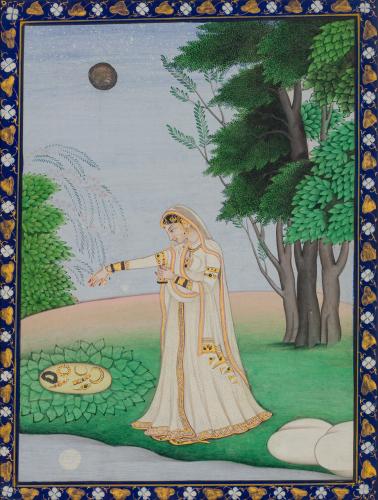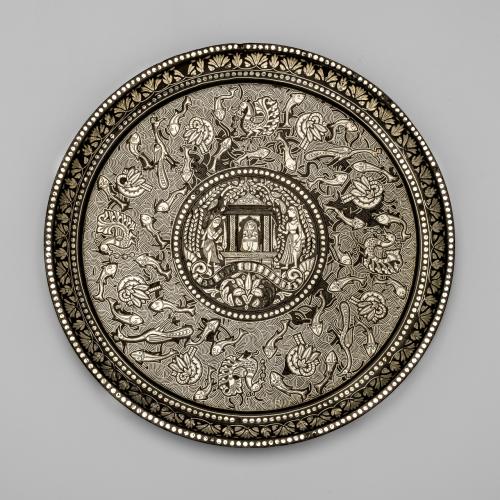
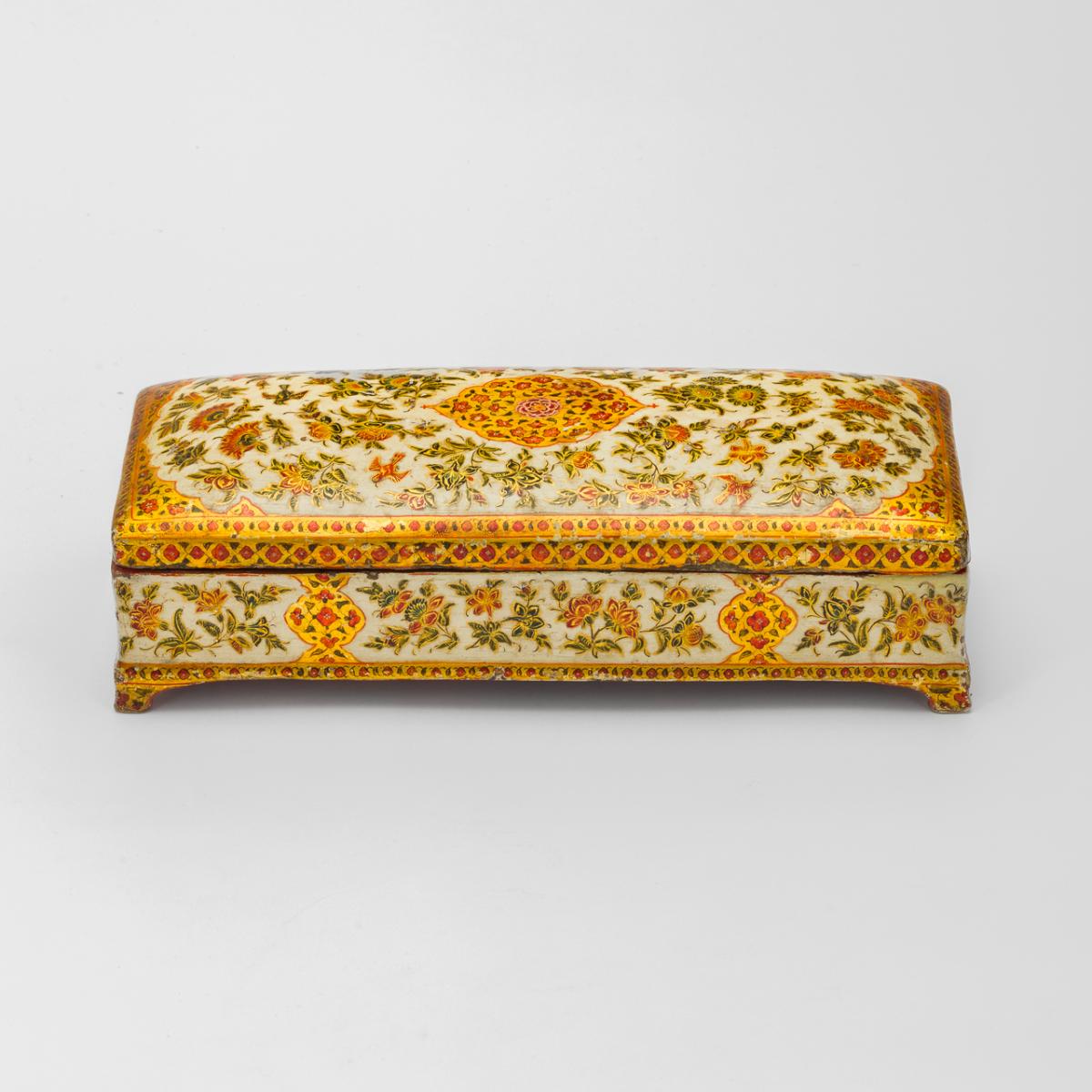
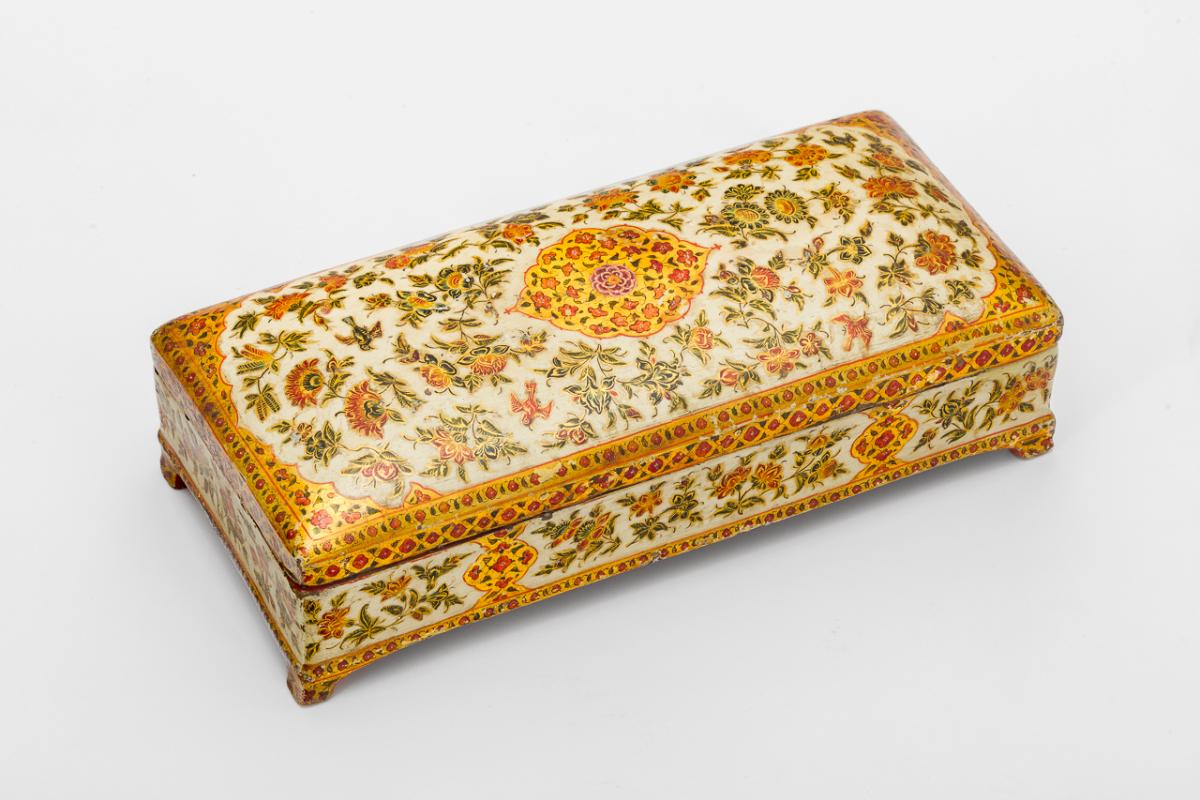
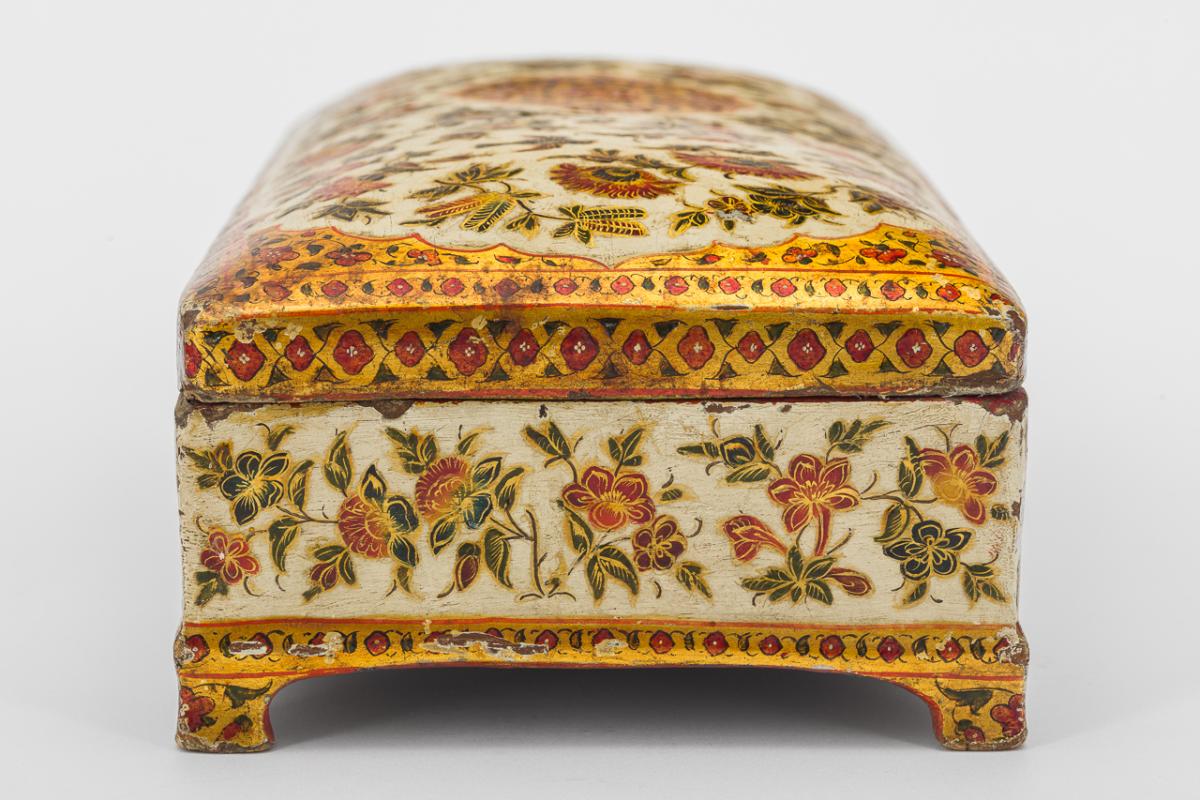
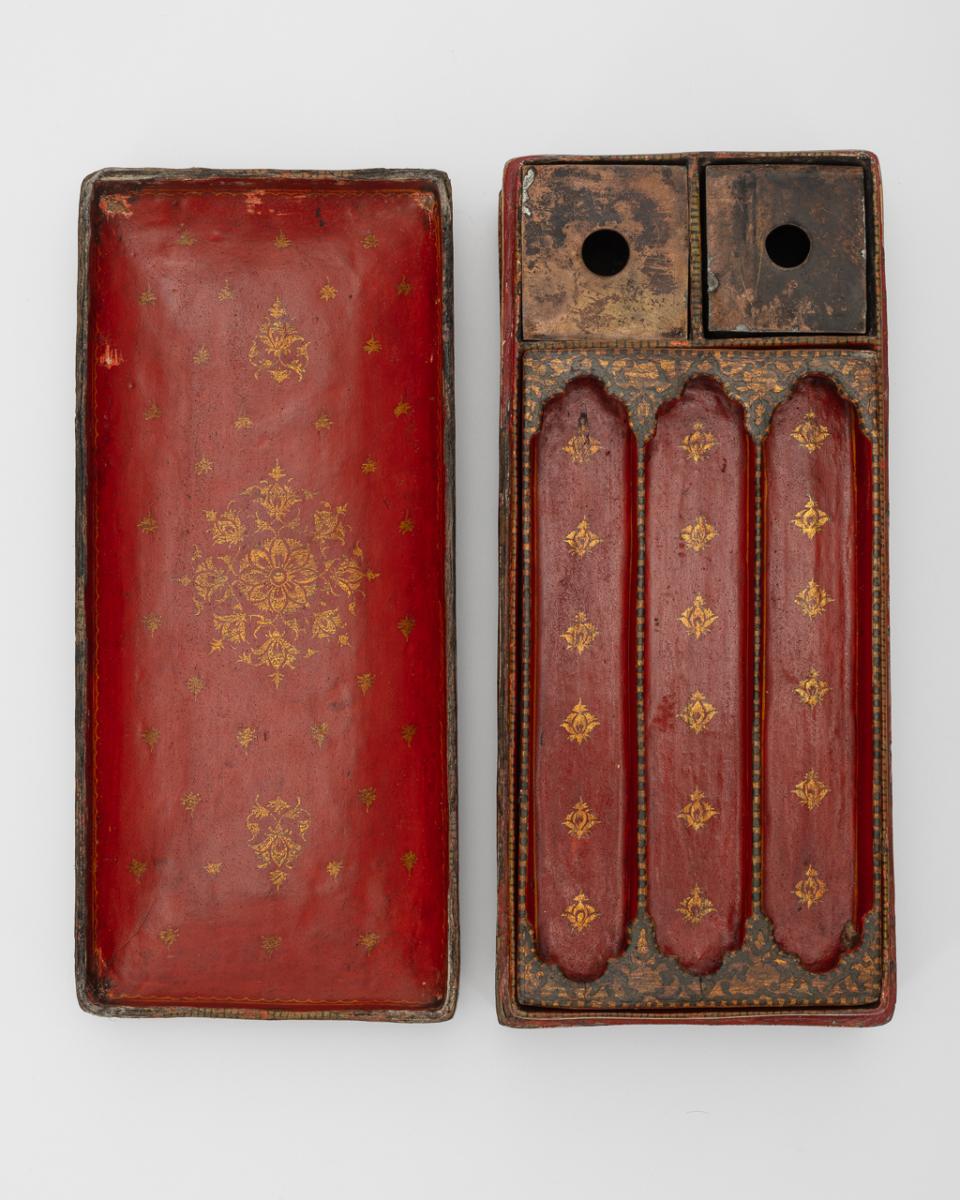
Price on application
This object is eligible for a Certificate of BADA Provenance
The BADA Standard
- Since 1918, BADA has been the leading association for the antiques and fine art trade
- Members are elected for their knowledge, integrity and quality of stock
- Our clients are protected by BADA’s code of conduct
- Our dealers’ membership is reviewed and renewed annually
- Bada.org is a non-profit site: clients deal directly with members and they pay no hidden fees
Lacquered Pen Box.
North India, 19th century.
Wood, papier mâché, lacquer.
9cm high, 29.5 cm wide, 13 cm deep.
The ornamental pen box (qalamdan) originated in Iran, where they were worn on the owner’s belt alongside daggers as status symbols.1 Of oblong form with four small feet, the base of the box is constructed from a light wood. This structure is covered in a thin layer of papier mâché, over which paint and lacquer have been applied. The removeable pen tray is made from wood to which paint has been directly applied. It has not been lacquered, nor does it have the fine finish of the rest of the pen box. The lid, whose concave form would have been difficult to construct with wood, has been made entirely from papier mâché. Papier mâché (lit. ‘chewed paper’) is a technique originating in Iran, entering India via Kashmir in the late 14th century. Legend has it that the Kashmiri prince Zain-ul-Abadin was imprisoned in the Persian city of Samarkhand, and having been so impressed with their papier mâché, brought the craft back to his homeland.
The lid and sides of the pen box are richly decorated with a variety of flowers and their leaves including lotus, peonies, catkins, and roses. A pink chrysanthemum at the centre of a polylobed golden rosette forms the focal point of the lid. A single bird is seen amongst the flowers. These flora and fauna are outlined and highlighted with gold. A hidden compartment, decorated with a baroque floral burst and small palmettes, is revealed when the pen tray and metal inkwells are removed. This motif is echoed on the underside of the box. The similarity of this ornamentation to floral borders of late 18th and early 19th century Mughal calligraphy panels, such as those seen in the Victoria & Albert Museum, London (accession nos IM.11:2-1913 and IM.131-1921) is striking.
On completion of the paintwork, several layers of lacquer varnish have been applied to give depth and sheen to the finish. This creates an aesthetic effect similar to that of lacquerwork in East Asia, though in that case, the lacquer is derived from the resin of the Rhus verniciflua tree, whereas in India, the lacquer derives from the secretions of the Kerria lacca or Coccus laccae insect.2
Similar lacquer pen boxes were made in Kashmir due to the influence of Persian art on the region.3 However, these tend to comprise a single pen and inkwell (e.g. Ashmolean EA1966.59). This example, with space for three pens and two removeable inkwells, is far more consistent with Mughal qalamdans like those in the Los Angeles County Museum of Art (accession no. M.86.190.3a-d) and the Victoria & Albert Museum, London (accession no. 02549(IS)).
1 Savasere, Renuka. ‘Cradle of Craft’, India International Centre Quarterly 37.3 / 4 (Winter 2010 – Spring 2011). Pp. 286-306; 287.
2 Shah, Haku. ‘Lacquerwork in India’. In Monika Kopplin (ed.) Lacquerware in Asia, Today and Yesterday. Paris: Unesco Publishing, 2002. Pp. 191-203; 191.
3 Shookoohy, Mehrdad. ‘Persian Influence on Kashmiri Art’, Encyclopædica Iranica Vol. XVI, Fasc. 1. Pp. 61-64.
The BADA Standard
- Since 1918, BADA has been the leading association for the antiques and fine art trade
- Members are elected for their knowledge, integrity and quality of stock
- Our clients are protected by BADA’s code of conduct
- Our dealers’ membership is reviewed and renewed annually
- Bada.org is a non-profit site: clients deal directly with members and they pay no hidden fees


